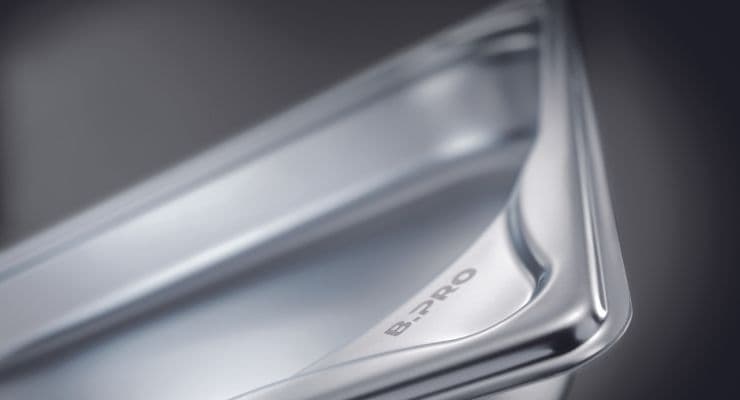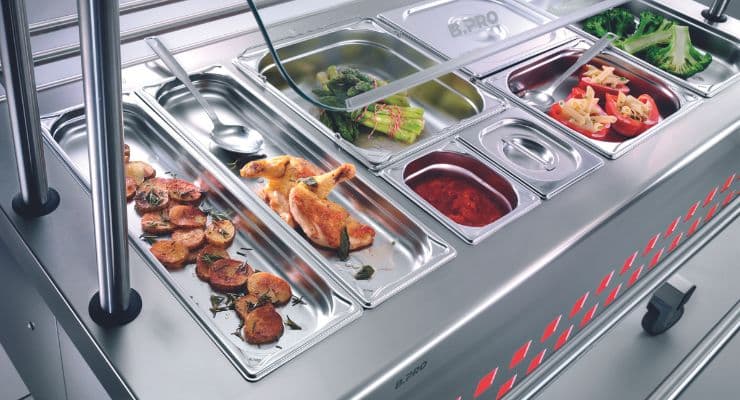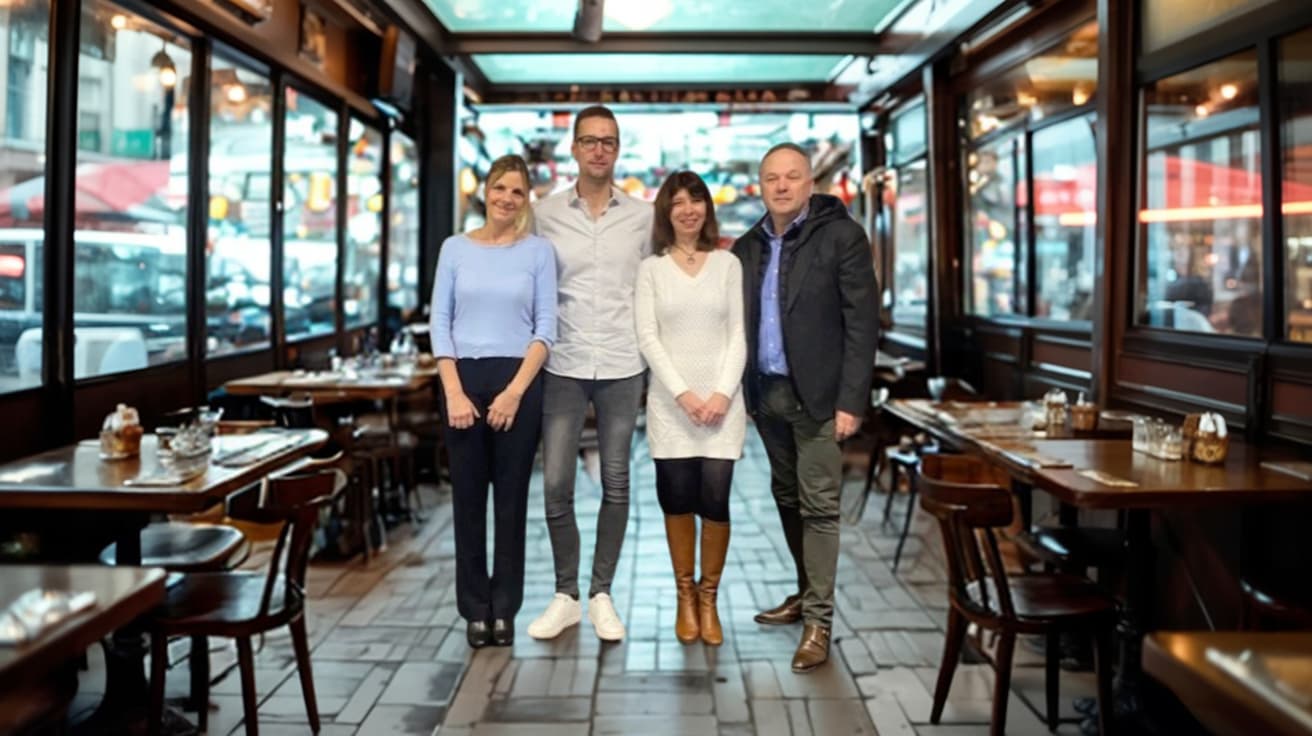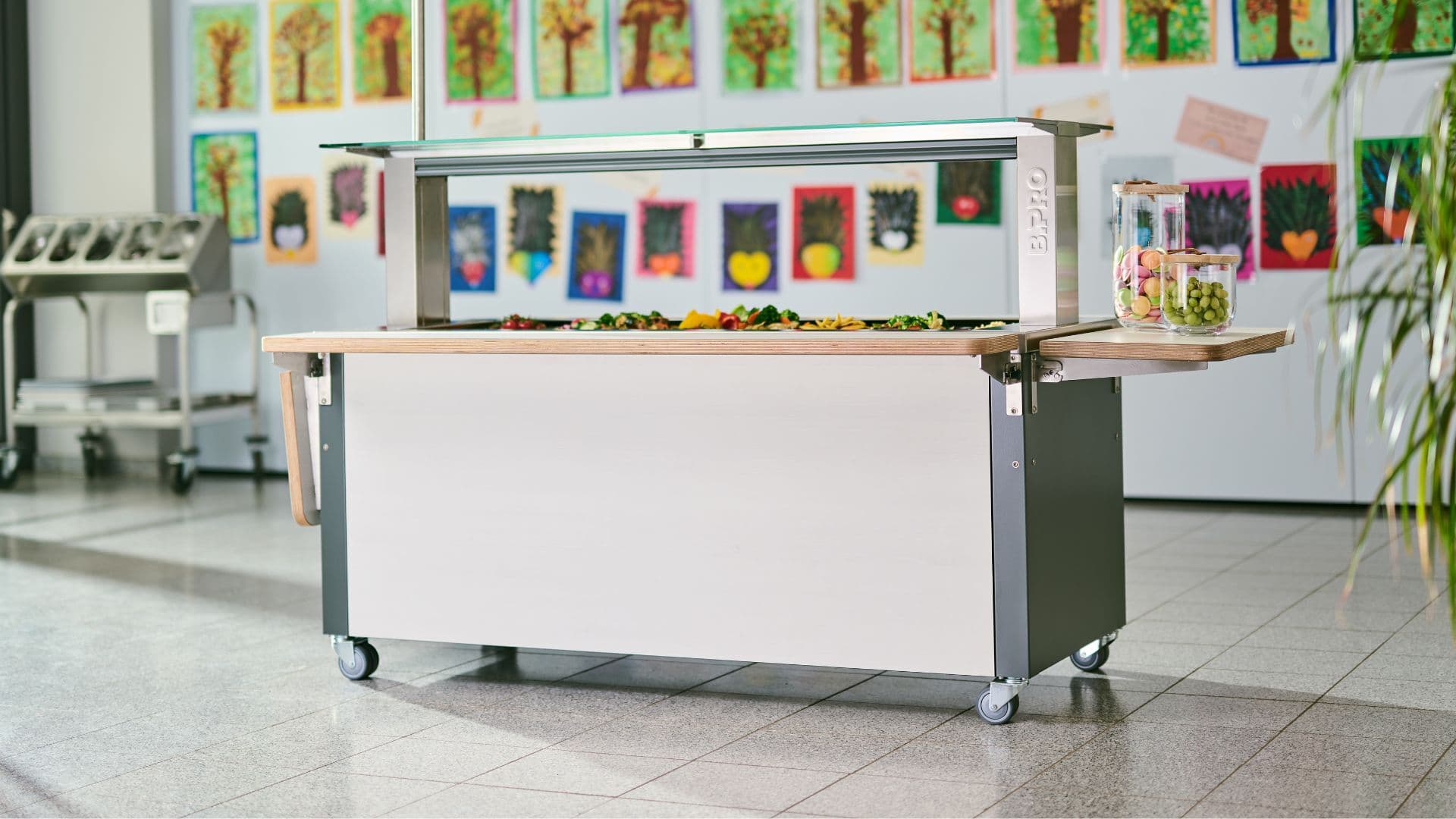
Gastronorm containers - Episode 1: History and sizes
They have a permanent place in professional kitchens, where they demonstrate their versatility day after day: Gastronorm (GN) containers help to process and present food efficiently and hygienically, and are indispensable from cold store shelves to serving counters. But how long have these practical kitchen helpers actually been around, which design is best for which application and what needs to be considered when handling them?
All these and many more questions are answered in this blog series, in which we take a closer look at GN containers and their almost inexhaustible possibilities for commercial kitchens and event catering, restaurants and retail.
But in order to understand what an enormous upheaval the introduction of the Gastronorm meant, let's first take a trip back in time - to an era long gone:
The history of the Gastronorm
Until well into the 1960s, professional kitchens were characterised by a proliferation of different container shapes and sizes that were almost impossible to keep track of. The result: a massive waste of space and unnecessarily complicated work processes. It was high time for fundamental change.
In autumn 1964, the Swiss Association for Hospital, Home and Community Catering and the Swiss Hotel Association joined forces to tackle this. The vision of the Swiss masterminds was to finally be able to transport and store food efficiently and to make optimum use of the limited space in ovens and fridges with precisely fitting rectangular containers. By defining the Gastronorm standard, they revolutionised the world of commercial kitchens and food processing companies.
In the 1970s, Germany then put its own rules around the gastronorm on paper. DIN 66075 specifies, among other things, which cut-outs catering equipment must have so that GN containers can be used. By the time the food containers were included in the European standard EN 631 in 1993, they had long since begun their triumphal march through Europe and to large parts of the world.
Today, almost all catering equipment built in Europe is based on the gastronorm. But what actually made and makes the container system so special?
.jpg&w=3840&q=75)
Systematic food processing: shape and dimensions of the GN containers
Gastronorm containers are available in the sizes GN 2/1, GN 1/1, GN 1/2, GN 2/4, GN 1/4, GN 2/8, GN 2/3, GN1/3, GN 1/6 and GN 1/9. They not only have the rounded inner shape and the flat top edge in common. They are also all based on a basic grid of 530 x 325 mm (approximately the dimensions of a baking tray), which corresponds to the GN 1/1 size. All other container sizes are derived from this, smaller ones are given as fractions, larger ones as multiples:
GN 2/1: 530 x 650 mm, surface area: 34.5 dm², aspect ratio: 1.23
GN 1/1: 530 x 325 mm, surface area: 17.2 dm², aspect ratio: 1.63
GN 1/2: 265 x 325 mm, surface area: 8.6 dm², aspect ratio: 1.23
GN 2/4: 530 x 162 mm, surface area: 8.6 dm², aspect ratio: 3.27
GN 1/4: 265 x 162 mm, surface area: 4.3 dm², aspect ratio: 1.63
GN 2/8: 132 x 325 mm, surface area: 4.3 dm², aspect ratio: 2.46
GN 2/3: 354 x 325 mm, surface area: 11.5 dm², aspect ratio: 1.09
GN 1/3: 176 x 325 mm, surface area: 5.7 dm², aspect ratio: 1.85
GN 1/6: 176 x 162 mm, surface area: 2.9 dm², aspect ratio: 1.09
GN 1/9: 176 x 108 mm, surface area: 1.9 dm², aspect ratio: 1.63
Together with the various available depths of 20, 40, 55, 65, 100, 150 and 200 mm, this results in an enormous variety of models, and the right size can be found for a wide range of applications.
Another advantage:
The standardised containers can be flexibly combined. A food warmer in GN 1/1 with one 2/3 and one 1/3 container is just as feasible as a much smaller combination with four 1/6 and three 1/9 variants. There are virtually no limits to the imagination. This is also because the Gastronorm containers are available in different materials, which can be utilised to their full advantage depending on the intended use.
But that's what episode 2 of the Gastronorm blog series is all about.

 A portrait of B.PRO France
A portrait of B.PRO FranceHow does B.PRO work in one of the most demanding markets in Europe? General Manager Daniel Rewell offers insights into key product focuses, customer structures and the most important development topics.
 New buffet products
New buffet productsA convincing presentation, flexible functions and accessibility: Buffets have to meet a lot of requirements today. This is precisely why B.PRO has comprehensively revised the BASIC LINE - from optimised cooling technology to new solutions for the youngest of guests.
 "Besseresser" (KiKA) donation
"Besseresser" (KiKA) donationAs part of the TV series besseresser Kids - Lege packt's an (KiKA), B.PRO donated modules to the Wilhelm-Lehmbruck-Schule Dorsten-Östrich. The television project impressively demonstrated how commitment and technical expertise can work together to create real educational added value.
